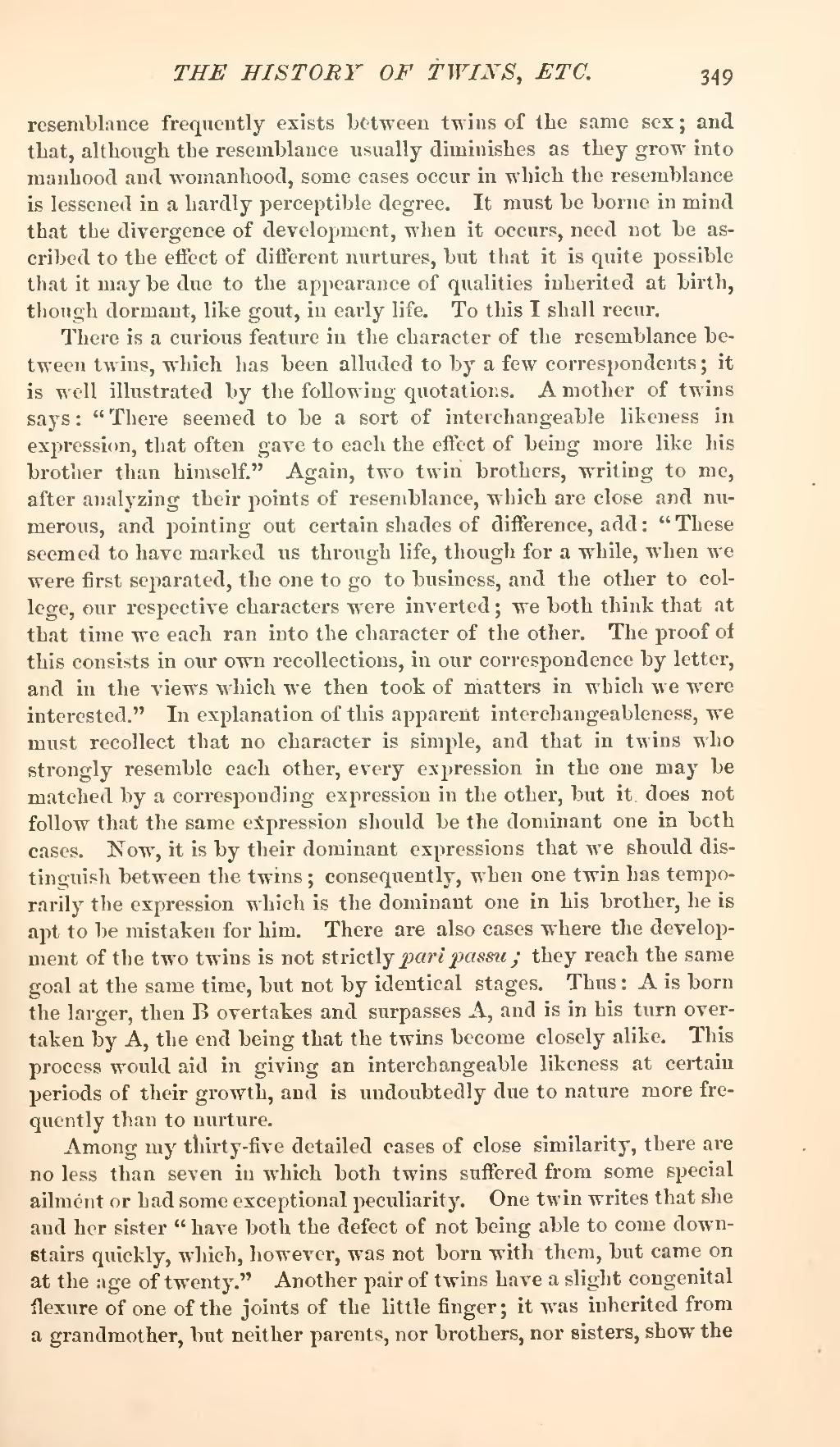resemblance frequently exists between twins of the same sex; and that, although the resemblance usually diminishes as they grow into manhood and womanhood, some cases occur in which the resemblance is lessened in a hardly perceptible degree. It must be borne in mind that the divergence of development, when it occurs, need not be ascribed to the effect of different nurtures, but that it is quite possible that it may be due to the appearance of qualities inherited at birth, though dormant, like gout, in early life. To this I shall recur.
There is a curious feature in the character of the resemblance between twins, which has been alluded to by a few correspondents; it is well illustrated by the following quotations. A mother of twins says: "There seemed to be a sort of interchangeable likeness in expression, that often gave to each the effect of being more like his brother than himself." Again, two twin brothers, writing to me, after analyzing their points of resemblance, which are close and numerous, and pointing out certain shades of difference, add: "These seemed to have marked us through life, though for a while, when we were first separated, the one to go to business, and the other to college, our respective characters were inverted; we both think that at that time we each ran into the character of the other. The proof of this consists in our own recollections, in our correspondence by letter, and in the views which we then took of matters in which we were interested." In explanation of this apparent interchangeableness, we must recollect that no character is simple, and that in twins who strongly resemble each other, every expression in the one may be matched by a corresponding expression in the other, but it, does not follow that the same expression should be the dominant one in both cases. Now, it is by their dominant expressions that we should distinguish between the twins; consequently, when one twin has temporarily the expression which is the dominant one in his brother, he is apt to be mistaken for him. There are also cases where the development of the two twins is not strictly pari passu; they reach the same goal at the same time, but not by identical stages. Thus: A is born the larger, then B overtakes and surpasses A, and is in his turn over-taken by A, the end being that the twins become closely alike. This process would aid in giving an interchangeable likeness at certain periods of their growth, and is undoubtedly due to nature more frequently than to nurture.
Among my thirty-five detailed cases of close similarity, there are no less than seven in which both twins suffered from some special ailment or had some exceptional peculiarity. One twin writes that she and her sister "have both the defect of not being able to come downstairs quickly, which, however, was not born with them, but came on at the age of twenty." Another pair of twins have a slight congenital flexure of one of the joints of the little finger; it was inherited from a grandmother, but neither parents, nor brothers, nor sisters, show the

